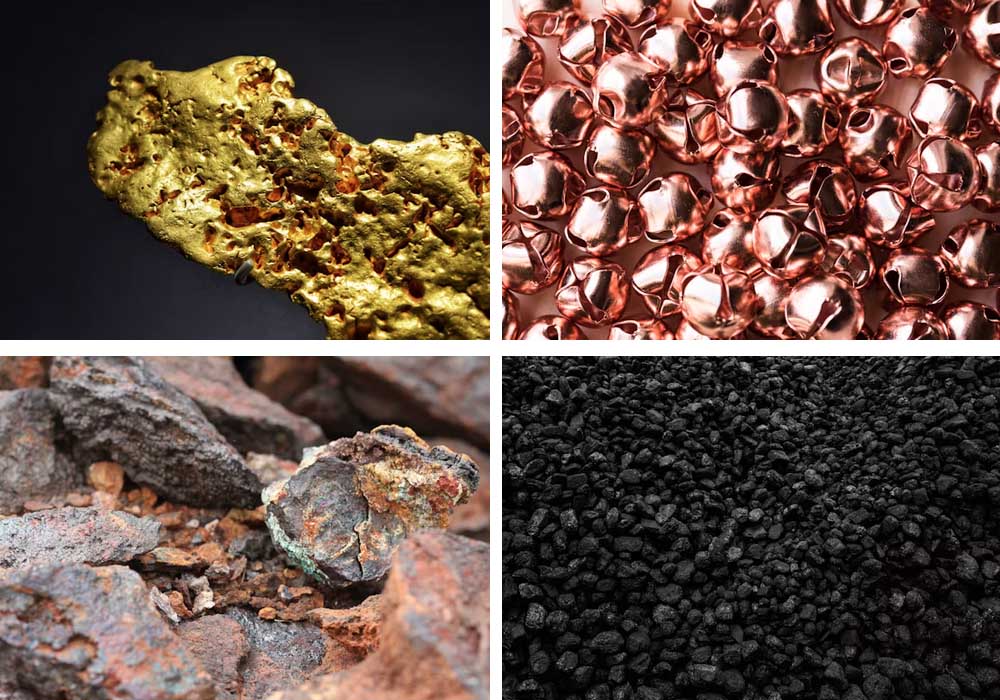Iron Ore Sorting Machine
Copper Ore Sorting Machine
Gold Ore Sorting Machine
Bauxite Sorting Machine
Coal Sorting Machine
Manganese Ore Sorting Machine
Chromite Sorting Machine
Limestone Sorting Machine
Quartz Sorting Machine
Phosphate Rock Sorting Machine
Rare Earth Sorting Machine
Talc Sorting Machine
Barite Sorting Machine
What is Mineral Ore Sorting
Mineral ore sorting is a sophisticated process that utilizes advanced sensor technologies to separate valuable minerals from waste rock based on their physical and chemical properties. This innovative technology enables mining operations to pre-concentrate ore before traditional processing methods, significantly reducing energy consumption, water usage, and environmental impact while increasing overall operational efficiency and profitability.
Modern mineral ore sorting solutions handle a wide range of ores including copper, gold, iron, lithium, coal, diamonds, and various industrial minerals. These AI-powered systems can detect subtle differences in color, density, atomic composition, and electromagnetic properties, allowing for precise separation even in complex ore bodies. The technology has revolutionized mineral processing by enabling economic recovery from lower-grade deposits that were previously uneconomical to process.

How Mineral Ore Sorting Works
Mineral ore sorting machines employ a combination of sensor technologies including X-ray transmission (XRT), near-infrared (NIR) spectroscopy, color cameras, laser scanners, and electromagnetic sensors to analyze each particle as it passes through the system. These sensors capture detailed data about the material's composition, density, and color characteristics. When a valuable mineral particle is identified, the machine triggers high-precision air nozzles to separate it from the waste material.
The sorting process begins with crushed ore being fed onto a vibrating feeder that spreads particles into a single layer. As particles flow past the sensor array, multiple data points are collected and processed by advanced AI algorithms in real-time. The system makes instantaneous decisions about each particle's composition and value, ejecting target minerals with remarkable accuracy while rejecting gangue material to tailings.
Core Features and Benefits of Mineral Ore Sorting
Modern mineral ore sorting systems offer unprecedented accuracy in detecting and separating valuable minerals from waste rock, with processing capacities ranging from 50 to 300 tons per hour. These machines significantly reduce the volume of material sent to grinding circuits, lowering energy consumption by up to 50% and reducing water usage by similar margins. The ability to pre-concentrate ore at the mine site reduces transportation costs and environmental footprint while increasing overall recovery rates.
Beyond operational efficiency, mineral ore sorting enhances mine economics by enabling profitable processing of lower-grade ores and extending mine life. The technology provides real-time data analytics for process optimization and can be easily reconfigured for different ore types. Non-destructive sorting preserves mineral integrity while reducing chemical usage in downstream processes, contributing to more sustainable mining practices.
Technical Specifications of Mineral Ore Sorting Machines
High-performance mineral ore sorters typically feature multiple sensor technologies including high-resolution X-ray transmission systems capable of detecting density differences as small as 0.1g/cm³. Processing capacities range from 50 to 300 tons per hour depending on ore density and particle size, with ejection accuracy rates exceeding 98%. These machines incorporate machine learning algorithms that continuously improve detection accuracy and adapt to changing ore characteristics.
Advanced ore sorters come equipped with industrial-grade computing systems for real-time data processing and user-friendly interfaces for parameter adjustment. Many models feature multi-sensor fusion technology that combines data from different sensors for superior sorting performance. Robust construction ensures reliable operation in harsh mining environments, with minimal maintenance requirements and energy-efficient operation.
Applications of Mineral Ore Sorting Technology
Mineral ore sorting technology finds application across diverse mining sectors, from precious metals like gold and silver to base metals including copper, lead, and zinc. It's particularly valuable for industrial minerals such as limestone, quartz, and feldspar, where purity significantly impacts market value. The technology also plays a crucial role in diamond recovery, coal processing, and the concentration of strategic minerals like lithium and rare earth elements.
Beyond traditional mining, ore sorters are used in recycling operations to recover valuable metals from electronic waste and industrial byproducts. The adaptability of these machines allows them to handle everything from large-scale open-pit mining operations to specialized underground mining applications with equal efficiency. The technology enables mines to reduce their environmental impact while improving economic returns.
Buying Guide
When selecting a mineral ore sorting machine, consider the specific ore types you'll be processing and their characteristic properties. Processing capacity requirements should match your production volume, while machine flexibility becomes important if you handle multiple ore varieties. Evaluate the sensor technology best suited for your ore characteristics—XRT for density-based sorting, NIR for mineralogical composition, or color cameras for visual characteristics.
Advanced features like remote monitoring, predictive maintenance capabilities, and compatibility with existing processing infrastructure provide long-term value. Consider the availability of technical support and the machine's robustness for mining environments. Many manufacturers offer ore testing services and pilot plant trials to demonstrate machine performance with your specific ore samples before purchase.
Maintenance Guide
Regular maintenance is essential for optimal mineral ore sorter performance. Daily inspection and cleaning of sensors, air nozzles, and mechanical components prevent buildup that could affect sorting accuracy. Periodic calibration ensures detection systems maintain precision, while regular software updates incorporate the latest algorithm improvements for enhanced performance.
Scheduled professional servicing helps identify wear components before failure and maintains machine reliability in demanding mining conditions. Keeping detailed maintenance records supports predictive maintenance strategies and ensures uninterrupted operation. Proper training for operational staff maximizes machine performance and extends operational lifespan through correct operation and basic maintenance procedures.